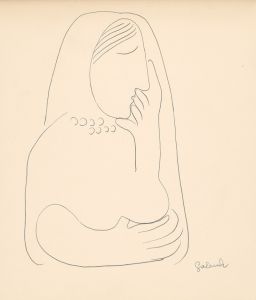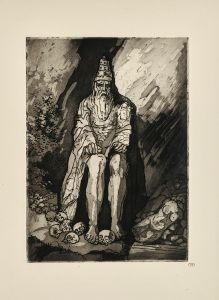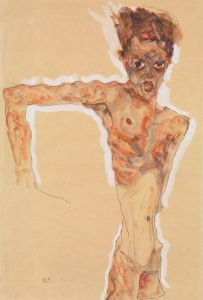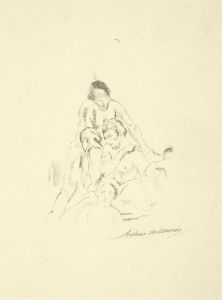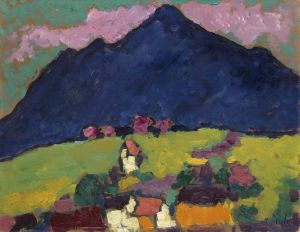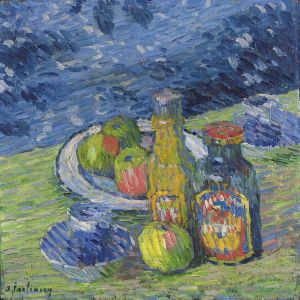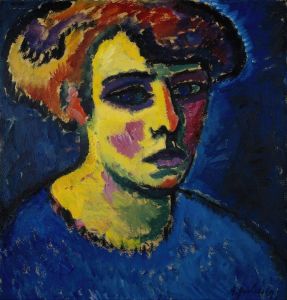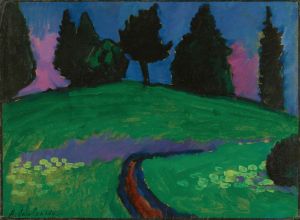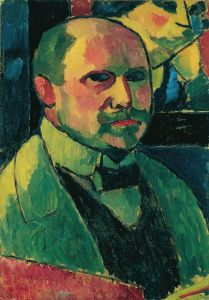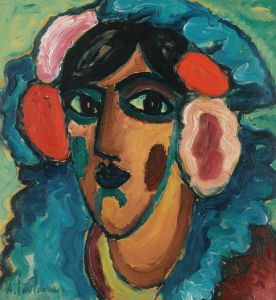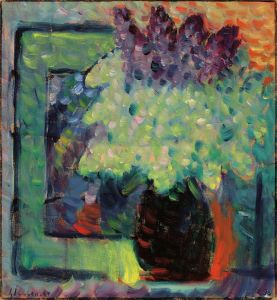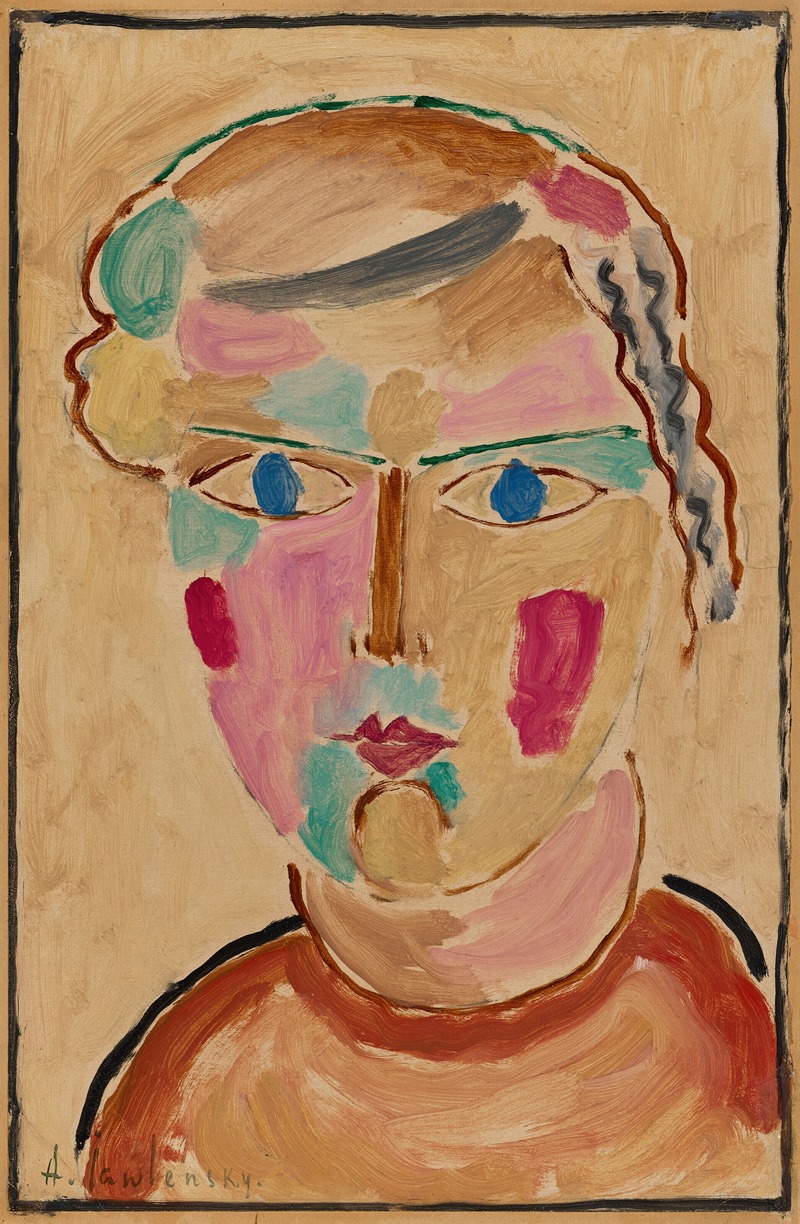
Helle Erscheinung
A hand-painted replica of Alexej von Jawlensky’s masterpiece Helle Erscheinung, meticulously crafted by professional artists to capture the true essence of the original. Each piece is created with museum-quality canvas and rare mineral pigments, carefully painted by experienced artists with delicate brushstrokes and rich, layered colors to perfectly recreate the texture of the original artwork. Unlike machine-printed reproductions, this hand-painted version brings the painting to life, infused with the artist’s emotions and skill in every stroke. Whether for personal collection or home decoration, it instantly elevates the artistic atmosphere of any space.
Alexej von Jawlensky was a Russian expressionist painter, known for his vivid use of color and bold compositions. One of his notable works is "Helle Erscheinung," which translates to "Bright Apparition" in English. This painting is a part of Jawlensky's exploration into the expressive potential of color and form, which was a significant aspect of his artistic journey.
Jawlensky was born in 1864 in Torzhok, Russia, and later moved to Germany, where he became associated with the expressionist movement. He was a member of the Munich-based group known as the Blue Rider (Der Blaue Reiter), which included other notable artists such as Wassily Kandinsky and Franz Marc. This group was instrumental in the development of expressionism, emphasizing the emotional and spiritual aspects of art.
"Helle Erscheinung" is a reflection of Jawlensky's mature style, which often focused on the human face and head as a means of conveying spiritual and emotional depth. His work during this period was characterized by a reduction of forms to their essential elements, using bold outlines and vibrant colors to create a sense of inner life and intensity. This approach was influenced by his interest in spirituality and the belief that art could transcend the material world to express deeper truths.
The painting exemplifies Jawlensky's use of color as a primary vehicle for expression. He often employed a palette of bright, contrasting colors to evoke a sense of energy and emotion. In "Helle Erscheinung," the use of color is not merely decorative but serves to enhance the spiritual and emotional impact of the work. The composition is likely to feature simplified forms and a focus on the face or head, which Jawlensky used as a motif to explore the inner essence of his subjects.
Jawlensky's work, including "Helle Erscheinung," was part of a broader movement in early 20th-century art that sought to break away from traditional representation and explore new ways of seeing and experiencing the world. His paintings are often seen as meditative and introspective, inviting viewers to engage with the emotional and spiritual dimensions of the human experience.
Throughout his career, Jawlensky faced numerous challenges, including the upheavals of World War I and the rise of the Nazi regime in Germany, which labeled his work as "degenerate art." Despite these obstacles, he continued to paint and develop his unique style, leaving a lasting impact on the expressionist movement and modern art.
Today, Jawlensky's works are held in high regard and can be found in major museums and collections around the world. "Helle Erscheinung" is a testament to his ability to convey profound emotion and spirituality through the medium of paint, using color and form to create a powerful visual experience. His legacy continues to influence artists and captivate audiences, highlighting the enduring power of expressionism in the art world.






